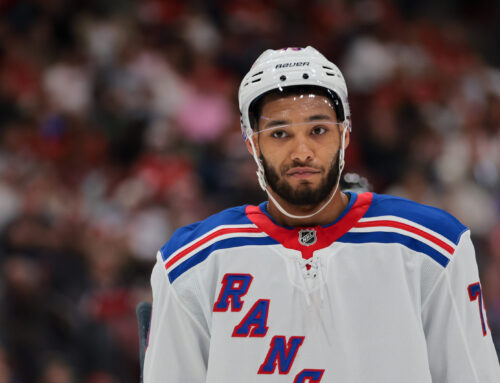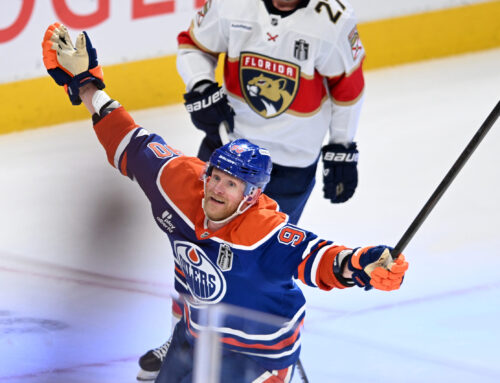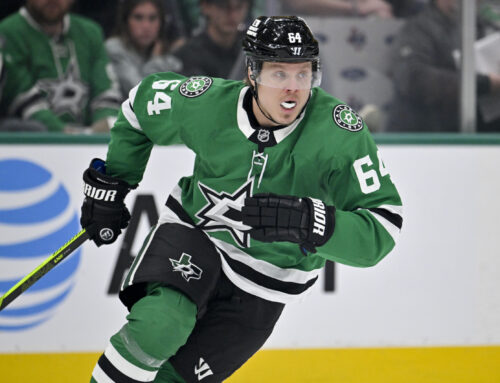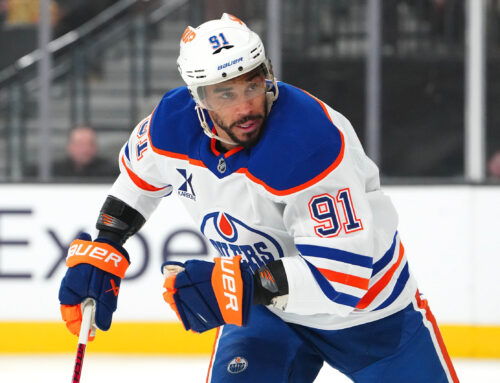In this column last week, we looked at 10 players that were in a trend of declining shot rates.
A declining shot rate should be a concern for every fantasy general manager. In leagues with peripheral categories, fewer shots are obviously not helpful. But even in points-only pools, players that take fewer shots will more than likely score less, and therefore starting accumulating fewer points each season.
Last week, it was players that had seen a declining shot rate in every season since the 2016-17 campaign. However, there were still plenty of players that had worrisome shot rate declinations, but not were one season short of belonging in a trend (in my mind, two seasons is noteworthy, but three seasons make a trend). I figured these players should also be noted. If they see another decline this season, then they are in a trend and your concerns should rise.
10. Brayden Schenn
There are probably plenty of reasons for his decline in shot rate, but two stand out. The first has to do with Vladimir Tarasenko's injury. Schenn was Tank's most frequent linemate this year and last, and when Tarasenko went down with a season-ending injury in October, that forced Schenn to play with lesser quality linemates such as Jordan Kyrou and Robert Thomas. The other big reason behind a decline in shot rate was also the acquisition of Ryan O'Reilly two summers ago. Since then, Schenn has seen a significant decrease in offensive zone starts (from 64 per cent two years ago to 54 per cent in each of the last two years) as well as a significant decrease in faceoffs (from 1,374 to around 700 in each of the last two seasons). It goes to reason that he would also see a decrease in shots per game, from 2.56 in 2017-18 to 2.21 to 1.94.
9. Eric Staal
A couple of seasons ago, Staal had a crazy year, posting 42 goals and 76 points. It helped that he was taking 2.94 shots per game while shooting a career-high 17.4 per cent. This year, he shot 16.8 per cent, but he had only 19 goals (a 24-goal pace). That's because he had a shot rate of 1.71 shots per game, the second-straight season he saw a decrease. That's 100 fewer shots over 82 games than he had two seasons ago.
8. Sean Monahan
Much like the next person on this list, this season may simply have been Monahan getting back to his average shot rate. If you exclude his rookie season, from 2014-15 to 2016-17, his shot rate was pretty consistent, ranging from 2.36 to 2.43. That jumped to 2.73 in 2017-18, dropped slightly to 2.71 last year and then 2.37 this season. He also had a career-low shooting percentage this season. This goes a long way to explaining why he was on pace for only on pace for 26 goals after back-to-back seasons of 30-plus.
7. Seth Jones
Like Monahan, is Jones' shot rate in a decline, or is it simply getting back to normal after a couple of abnormal years? It's a tough question. He never averaged two shots per game while he was in Nashville, so it took the trade to Columbus until it happened. He averaged 2.03 shots in his first full season with the Blue Jackets, but that jumped up to 3.19 in 2017-19. Since then, it dropped to 2.45 last year to 2.25 this season.
The decrease in shot rate for Ristolainen was obvious as soon as Buffalo won the draft lottery two seasons ago and drafted Rasmus Dahlin. Ristolainen's ice time has dropped two minutes per game in each of the last two seasons (from 26:30 to 22:48). His power-play time has also decreased from 3:41 per game in 2017-18 to 2:20 per game this year. A decrease in shot rate (from 2.49 two seasons ago to 2.33 last year to 1.86 per game) was completely obvious.
5. Oliver Ekman-Larsson
From the 2015-16 to the 2016-17 season, OEL's shot rate dropped from 3.04 to 1.84, which was pretty extreme. We should have taken it as a sign of things to come. The next season he bounced back up to 2.46 before decreasing to 2.17 to 2.05 this year. The shot rate is not the only concerning part for OEL owners. His ice time has also been decreasing the last few years, and he started to lose his spot on the top power-play unit (although it's not like he was efficient there this year anyway).
One of Gostisbehere's biggest attractions for fantasy owners was his willingness to shoot. Even if he missed the net on half of those attempts, it was fun watching him blast shot after shot. However, just constantly teeing up may be a thing of the past. Two seasons ago, he was averaging 2.83 shots per game. That cratered to 2.31 last year, which fell even further to 1.74 this season. He's lost his spot on the top power-play unit and is down to just over 18 minutes overall per night. Unless he can get to a new team where he can once again be the main man offensively, don't expect that shot rate, or his offensive numbers, to rebound.
3. Evander Kane
Kane is still a beast in peripheral categories, so his decrease in his shots-per-game isn't as pronounced as many others on this list. However, his shot rate this year of 3.38 is more than half a shot less than it was two seasons ago, and almost a full shot per game than it was back in 2015-16, when he averaged 4.17 shots per game. He's still a big hitter who has led the league in PIM the last two seasons, so you don't need to worry about the shot decline as much as others on this list.
2. Phil Kessel
The underrated iron man didn't have a great season. Last week, I had a rule that to make the list, the player needed at least three straight seasons of a decline. Kessel didn't meet that criterion, but he's seen a drop in shot rate in five of the last six seasons. Starting with 2013-14, his shot rate was 3.72. Over the next few years, that dropped significantly. Two seasons ago, he averaged 3.18 shots per game, which decreased to 2.62 last year to 2.19 this season. That's a full shot less per game this year compared to just a couple of seasons ago. Considering he doesn't contribute in any other peripheral category, and he's not a guy you should have on your fantasy squad.
1. Brent Burns
At 34 years old, it's easy to say that he's on an obvious downswing, but I think the real reason lies with Erik Karlsson. When the two are playing together, they take fewer shots each, which makes sense. Burns would obviously defer to Karlsson a little more than he would, say Tim Heed. Just look at this past season. In the team's first 57 games, Burns averaged 3.07 shots per game. Then Karlsson missed the rest of the season with a broken thumb. In the team's next 13 games, Burns averaged 3.85 shots per game. Overall, Burns' shot rate dropped from 4.05 two seasons ago to 3.66 last year to 3.21 this season. For the record, Karlsson's shot rate this year was 2.14 shots per game, his lowest since his 2009-10 rookie season.





 BUF
BUF NYR
NYR CHI
CHI WSH
WSH CBJ
CBJ S.J
S.J VAN
VAN PIT
PIT ANA
ANA SEA
SEA
